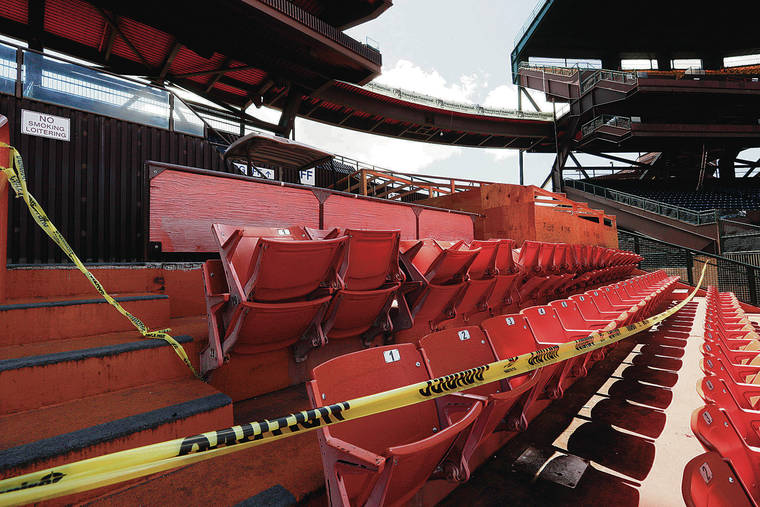Aloha Stadium may be forced to rely on developers to fund needed health and safety repairs to keep the current facility operational until the new one debuts in 2023.
The rusting 45-year old stadium has not received appropriations for health and safety work since 2017 and a $7.7 million supplemental request by Gov. David Ige for funds to bridge the period until the opening of the New Aloha Stadium Entertainment District has not gained traction in the Legislature this session, officials said.
“Currently, we’re not seeing operating funds being appropriated for health and the safety improvements,” said Chris Kinimaka, Public Works Administrator for the Department of Accounting and General Services.
She told the Aloha Stadium Authority, “We had to shift the source of funding from general obligation bonds for capital improvement projects to general revenues as an operations cost because, with the anticipated demolition of the existing stadium, it will technically no longer qualify as a CIP. So, we are looking at alternative means to direct the repair expenses.”
One option, Kinimaka said, “is to work it into our agreement with the project developer, who can take care of the existing stadium repairs as part of their scope of work. We’re discussing the viability of that option and how it can be expensed.”
The new stadium is projected to debut in September 2023 in time for the University of Hawaii football home opener. The state has targeted having a developer selected and under contract in the first quarter of 2021.
The possibility of asking the developer to assume repairs has been floated in the NASED request for qualifications circulated last month.
Kinimaka said it was “too early” to discuss other potential options.
The issue comes as the Aloha Stadium Authority awaits the latest structural assessment from its consultant. The stadium had been undergoing biennial inspections but those have been upgraded to annual or as needed due to the deterioration of the facility.
Kinimaka said, “Our on-going efforts to monitor, analyze, and address the stadium condition to maintain the health and safety of our stadium staff and guests continues.”
According to a stadium report, work for the upcoming season includes “rust mitigation along seat plates to cover holes and ‘soft spots,’ ” as well as repairing “concourse railings to address rusted/corroded connections.”

